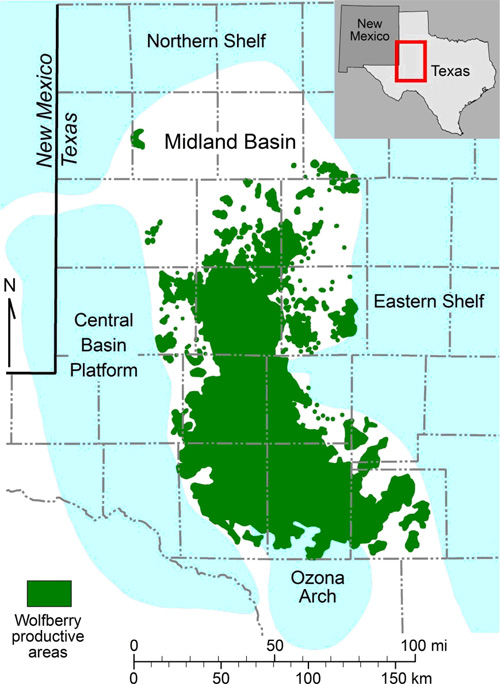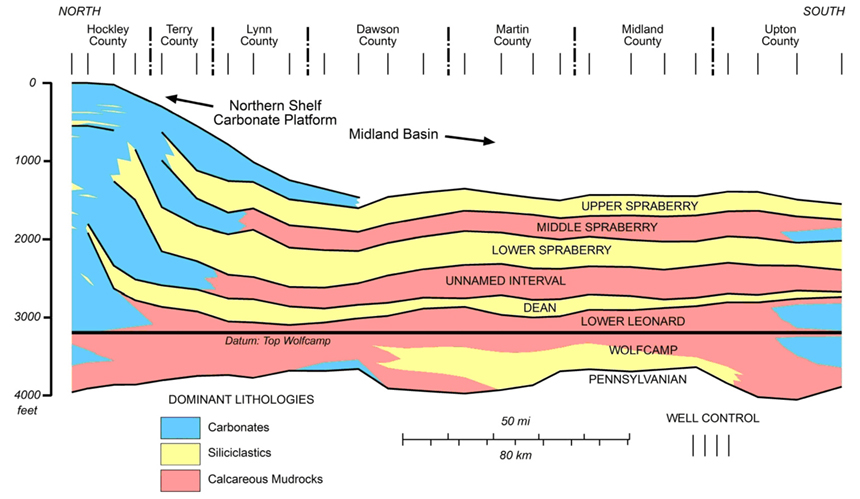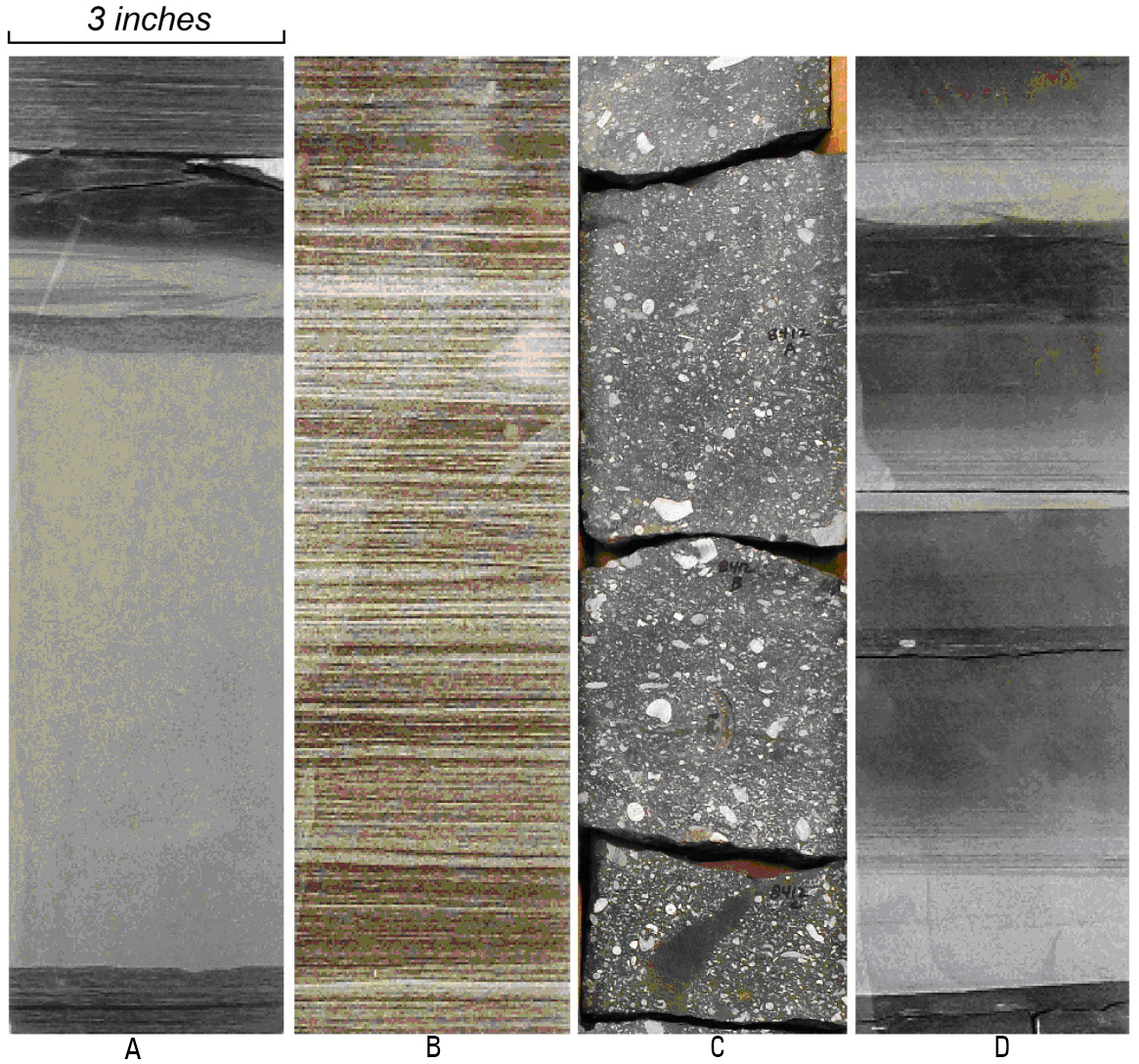
Figure 1. Map of the Midland Basin in West Texas showing Wolfberry productive areas in green (as of late 2010). The Wolfberry Play is located within a Permian deep-water ocean basin. Surrounding shallow-water carbonate platforms are shown in blue.
Summary:
The Permian (Leonardian) Spraberry and Dean sandstones have produced oil throughout the Midland Basin since the late 1940s. Known as the Spraberry Trend, productive areas extend across 18 counties and contain more than 10 Bbbl of oil (Fig. 1). More recently, operators have been including deeper formations in their Spraberry Trend completions: first the Wolfcamp (Permian) that underlies the Dean and then deeper zones in the Pennsylvanian. This expanded productive interval is called the Wolfberry Play. Multiple fracture stimulation stages open up these low permeability formations to production over a 4,000-ft vertical interval between 6,000 and 10,000 ft below land surface. More than 5,800 Wolfberry oil wells have been completed since the late 1990s. Initial production averages 30 to 125 BOPD, and ultimate per-well recovery is estimated at 100 to 140 MBOE. The STARR team is collaborating with several Wolfberry operators to achieve a better understanding of this complex hydrocarbon system.
The Wolfberry Play is a resource play characterized by heterogeneous lithologies, low permeabilities, and reservoirs and source rocks in close proximity. The paleogeographic setting was a deep ocean basin surrounded by shallow carbonate platforms. Basin-floor stratigraphy comprises alternating layers of calcareous and siliciclastic lithofacies having widespread continuity (Fig. 2). In siliciclastic intervals, such as the Spraberry and Dean, turbidite sandstones and laminated siltstones are interbedded with organic-rich mudrocks (Figs. 3a, b). In calcareous intervals, such as the lower Leonard and the Wolfcamp, carbonate debris flows are interbedded with carbonate turbidites and organic-rich calcareous mudrocks (Figs. 3c, d). Although coarser-grained turbidites and debris flows are the obvious reservoirs, finer-grained calcareous facies are also productive after fracture stimulation. Core-based studies are essential for recognizing productive and source-rock intervals in the Wolfberry Play. BEG's Core Research Centers hold more than 300 cores in Wolfberry formations in the Midland Basin. The STARR team is working with Wolfberry operators to (a) maximize the utility of BEG legacy cores through facies-based petrophysical and compositional analysis and (b) develop a regional stratigraphic context to help guide exploration and development of the play.
Counties: Terry, Lynn, Garza, Gaines, Dawson, Borden, Andrews, Martin, Howard, Ector, Midland, Glasscock, Sterling, Upton, Reagan, Tom Green, Irion, Crockett.

Figure 2. North-south stratigraphic cross section across the length of the Midland Basin showing lithologies in Wolfberry formations: Spraberry, Dean, Wolfcamp, and interbedded unnamed intervals. On the basin floor there is large-scale (100s of ft) alternation of low-carbonate (siliciclastics) and high-carbonate (calcareous mudrocks) intervals. Similar cyclicity also occurs at smaller scales (10s of ft). The margin of the shallow-water carbonate platform in the north (blue) is also shown.

Figure 3.Photographs of Wolfberry lithofacies observed in core. A) Complete turbidite sandstone enclosed in laminated siltstone, Dean Fm. B) Laminated siltstone, Spraberry Fm. C) Muddy debris flow with carbonate lithoclasts and bioclasts, Wolfcamp Fm. D) Thin carbonate turbidites interbedded with organic-rich mudrock, Wolfcamp Fm. Slabbed cores are 3 inches wide.
